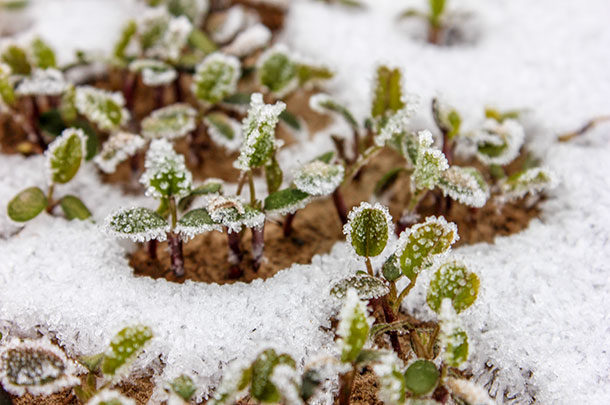“Man, we’re going to put this to the test,” Place recalls thinking as the thermometer dipped to 26ºF. “With most of the plants in the four and five leaf stages, I thought, ‘This is going to either really work or it's going to smoke the whole field at once.’”
To Place, planting the 132 acres of cold-tolerant berseem clover as a forage break crop in his cereal and potato rotation cycle was a huge step out of his comfort zone. However, after recently transitioning the sandy, loam-type soil on his farm from conventional tillage to no-till, he was in search of a crop that would help break disease cycles while improving soil structure.
Having experience growing alfalfa and berseem clover mixtures, Place chose a berseem clover with the ability to survive in temperatures as low as 5ºF without snow cover to grow as a monoculture. Not only did he find it to be a cheaper, high-quality alternative to alfalfa, but also more water efficient.
“We could water it and kind of let it sit, then water it, let it sit – it wasn't a real water hog like I thought it might be – probably a little less water usage than the alfalfa,” Place explains.
As for surviving the cold nights below freezing?
“Everything kind of turned a little bit of a purple color, but just kept throwing leaves and kept coming. Even this fall after we took our last cutting off, it started to come back. Then we got into some real cold weather. It slowed way down, but it was still alive all the way up until it turned to a frozen block,” he says. “We were quite impressed with the way it handled the frost for what we were doing.”
New seeding options for producers
The development of a cold-tolerant berseem clover able to withstand temperatures as low as 5ºF has opened the door to producers looking to take advantage of the benefits of frost seeding and berseem clover together, says Jerry Hall, director of research for Grassland Oregon. Prior to this, the coldest temperature berseem clover could withstand was 25ºF.
“When berseem clover is frost seeded, it is broadcasted onto the frozen surface of the soil – preferably with no snow cover,” says Hall. “As soil follows a freezing and thawing cycle, seed will work into the top 0.25 inches of soil.”
Since the clover seed can germinate and start growing once weather becomes favorable instead of having to wait until soil firms up enough to get drilling equipment into the field, frost seeding tends to result in higher yields from extended growing seasons.
“Whether producers are using berseem clover to give permanent pasture a protein and fertility boost, improve alfalfa stands or to be grown as a monoculture for silage or hay, frost seeding can give them a strong head start on production,” says Hall. ![]()
Laura Mushrush is a freelancer with Agribusiness Communications. Email Laura Mushrush.
PHOTO: An investment into improving cold tolerance in berseem clover has given growers the ability to take advantage of frost seeding and berseem clover benefits together. Photo provided by Laura Mushrush.











